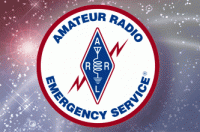|
Welcome,
Guest
|
TOPIC:
K1ICE Reports on NBEMS 10 years 6 months ago #306
|
From: ARES E-Letter (10/16/2013)
As promised, following up on previous issues' closing remarks, I spent some time this past month downloading and operating the NBEMS suite of programs and utilities for multi-mode digital operation with a sound card (no hard TNC or other special "black box" needed; nor, Internet or other digital infrastructure). The software is free and easily downloadable from W1HKJ (www.w1hkj.com/nbems). A good overview of the suite can be found on the ARRL website (www.arrl.org/nbems). Essentially, as the website overview states: "Narrow Band Emergency Messaging Software (NBEMS) is an Open Source software suite that allows amateur radio operators to reliably send and receive data using nearly any computer (Windows, Mac, and Linux) and any analog radio without requiring a dedicated digital infrastructure or specialized modem hardware. NBEMS works on both VHF/UHF FM and on HF. In a presentation you will learn the basics of sending and receiving data using Fldigi. You will also see how to easily send and receive verified files and forms using Flmsg. NBEMS is the standard digital emergency/disaster communications package for Western PA ARES." A good update on the NBEMS suite was published just recently, in September 2013 QST, pages 70-71. Development has focused on making the programs and utilities more user friendly, to reduce the risk of errors when operators are under stress from an emergency situation. A real life hospital account is included. My initial experimentation with NBEMS has been very satisfying. There is nothing more exciting to get a new program to work on the air - and that was the case with me and NBEMS. And, well, truth be told, its flagship fldigi has become my personal default program for DXing at night on 20-meters (around 14.070 MHz) using PSK31. The waterfall is better, the tuning is better, and works well to dig the data out of seeming nothingness. I tried the flmsg utility, and its value as a tool for completing and transmitting common Incident Command System (ICS) and ARRL forms is in evidence. I practiced completing an ICS-204 form and an ARRL Radiogram form, and then mock-sending them (with my radio's output power off) via the new fldigi feature Autosend, which eliminates the multiple steps needed to send a form before the function's adoption. As I mentioned, this report covers only my initial trials. Congrats to the NBEMS developers on making an open source program so available and as an obvious tool in the emergency communicator's tool box. - K1CE |
|
Please Log in or Create an account to join the conversation. |
Time to create page: 0.132 seconds
